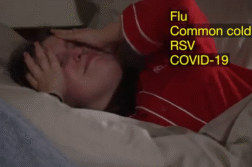TAMPA, Fla. (Ivanhoe Newswire) — A new study could change the way babies are born. Some doctors think it could decrease the risk of preeclampsia, caesarean sections and stillbirths.
Behind this door, miracles happen. And this one, Carley Tish, happened at 39 weeks.
Ashley Tish, Carley’s mother explained to Ivanhoe, “About 37 weeks, 38 weeks came around I was just begging her please just induce me now.”
USF Doctor Charles Lockwood helped birth this new study; inducing at 39 weeks resulted in 13 percent C-sections compared to 35, and 9 percent severe neonatal complications compared to 13.
Lockwood says some research shows stillbirths and C-sections are on the rise.
“If a woman asks me how do I absolutely minimize my risk of C-section and maximize my possibility of a healthy baby, I’d have to say well an elective induction at 39 weeks,” said Charles J. Lockwood, MD, USF Health.
Terri Lynn McEndree, MD, Florida Hospital stated, “Essentially this is turning our regular practice of delivery at term on its head.”
Florida Hospital Doctor Terri McEndree says it may take baby steps to embrace these findings.
“Many of my patients want to do this naturally and they don’t want intervention,” explained Dr. McEndree.
McEndree says pushing induction was hasn’t been protocol.
McEndree concluded, “So now that this may become more mainstream it is possible that we’re going to need to adjust staffing.”
Dr. Lockwood agreed, “It’s going to be controversial.”
But no controversy for Carly’s birthday.
“I’m just so glad I was induced. It would have been a long haul,” said Tish.
And it looks like the big brother was more than ready to welcome his baby sister into the world.
Doctor Lockwood says patients with placenta previa and breach presentation are just some examples of those who would not be candidates for induction at 39 weeks. Induction could cause uterine hyperstimulation. But all in all doctors say the patient can make the decision.
Contributor(s) to this news report include: Emily Maza Gleason, Producer; Videographer, Chris Tilley; Roque Correa, Editor.
To receive a free weekly e-mail on Medical Breakthroughs from Ivanhoe, sign up at: http://www.ivanhoe.com/ftk



